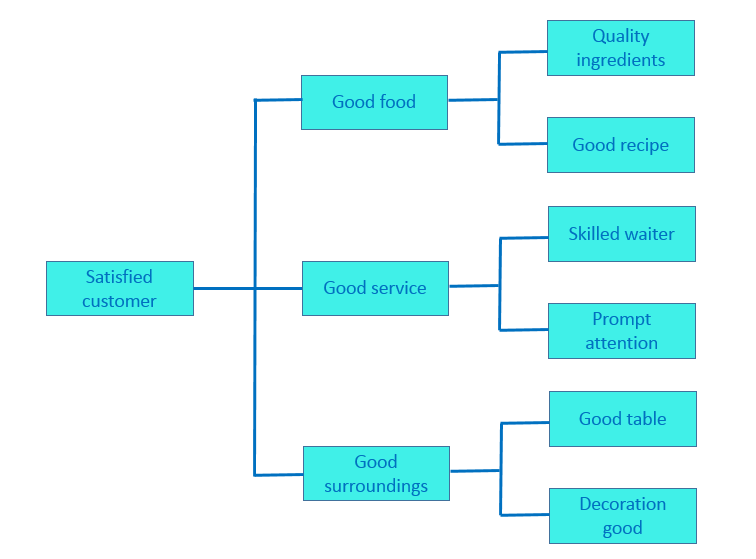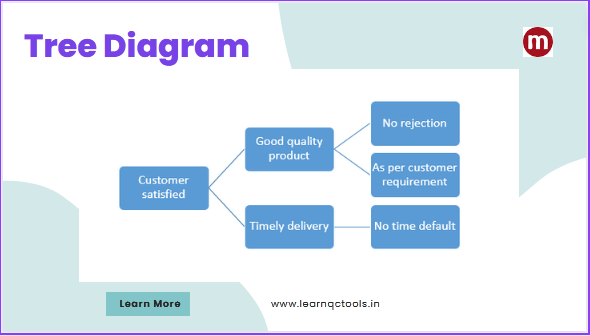What is a Tree diagram?
A tree diagram in quality tools is a tool used to find out the way and the tasks that need to be done to achieve a primary goal and related sub-goals. A tree diagram is to find out the best and most effective way of achieving the goal. The tree diagram is a hierarchical graphic representation of the steps required to achieve a goal.
A tree diagram starts with one item and then divide into two or more branches and further these branch into two or more & so on. It is used to break down a broad category into smaller categories. The tree diagram helps us to move step by step from general to specific things. This is a generic tool that can be used for a variety of purposes.
Types of tree diagram
First is a diagram that breaks down the main subject into basic elements and shows their relationship to the goal and means to achieve the goal. The second is to show the means and process necessary to successfully implement the given plan. So below is the types of tree diagram:
- Genealogical Tree Diagram
- Decision Tree
- Family Tree
- Organization Chart
- Mind Map
- Flow chart
- Syntax Tree
- Probability Tree
When to use the tree diagram?
A tree diagram is used for many purposes as below:
- When analyzing the processes in detail
- While trying to find out the root cause of a problem
- While trying to implement remedial action
- For analyzing key issues identified by the affinity diagram and Relation diagram.
- When a problem is addressed in general terms and needs to move to a specific one to take action.
- It is an easy way to explain the detail
How to create a tree diagram?
Below are the steps to make a tree diagram:
- Identify the problem with a clear statement and display it.
- Do brainstorming to find out the means to achieve the goals. That can be primary, secondary, 3rd mean, 4th means and so on.
- Ask a question, which will lead to the next level of details such as, What tasks must be done to achieve this? What causes this? Why does this happen? etc
- Carry out the necessary and sufficient checks. It is similar to checking the logical validity of the causes used in the cause-and-effect diagram.
- Continue to identify each new idea in a subject statement. Do not stop until you reach basic elements such as Specific action that can be taken and the root cause of the problem.
Benefits of a tree diagram
The benefits of a tree diagram are:
- As the approach is systematic and logical, there is no chance that any essential item will be omitted.
- It identifies and displays the strategies for solving the problem easily and so effectively that team members are agreed with each other.
Tree diagram example
A Hotel manager wants to improve the satisfaction level of his customer. A brainstorming session was done to identify the various factors improving customer satisfaction. These factors were grouped and converted into a tree diagram as below:

By identifying the factors influencing customer satisfaction, data was collected on a regular basis and required necessary actions are taken on the factors affecting customer satisfaction.

